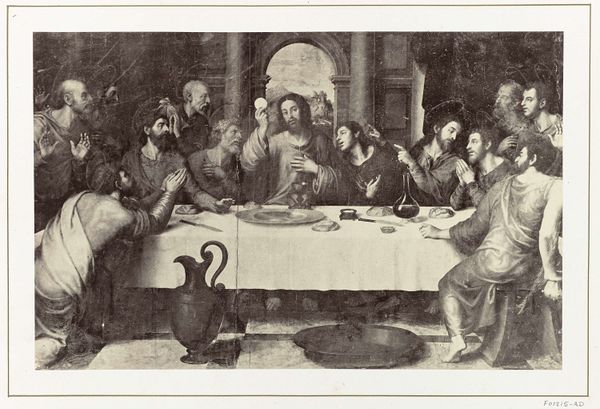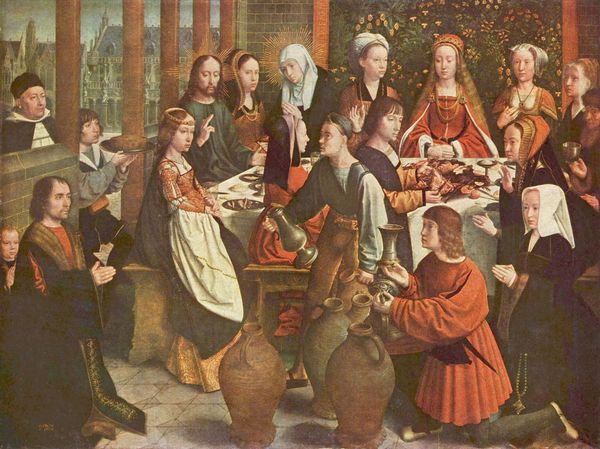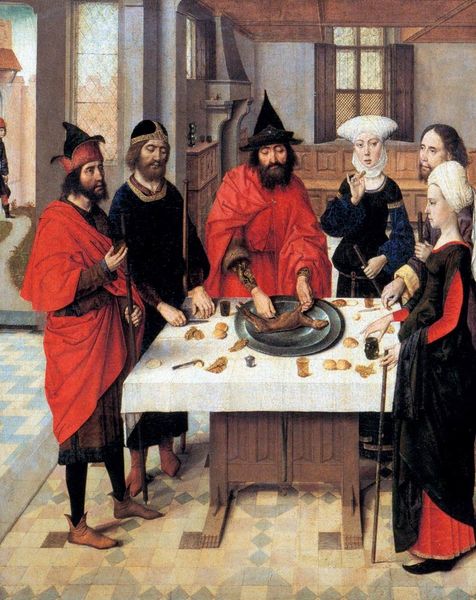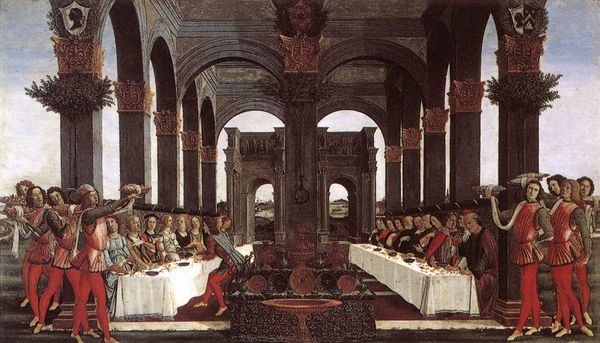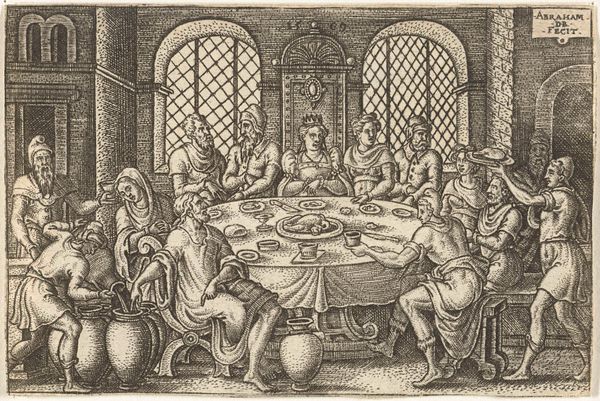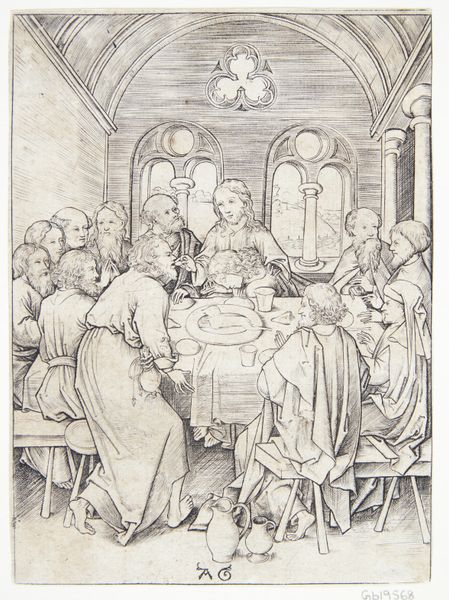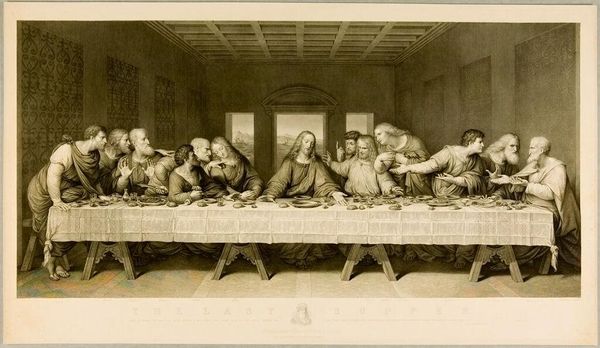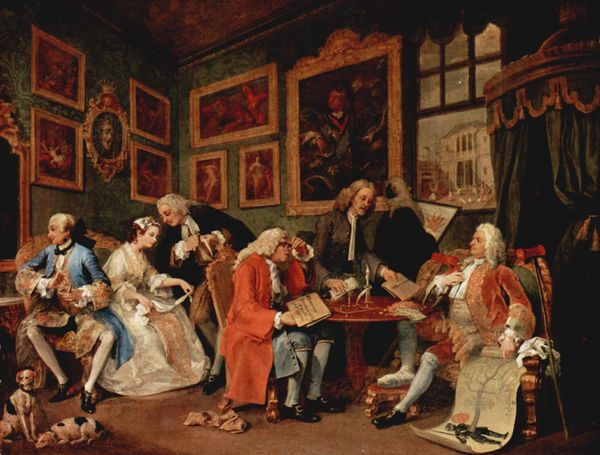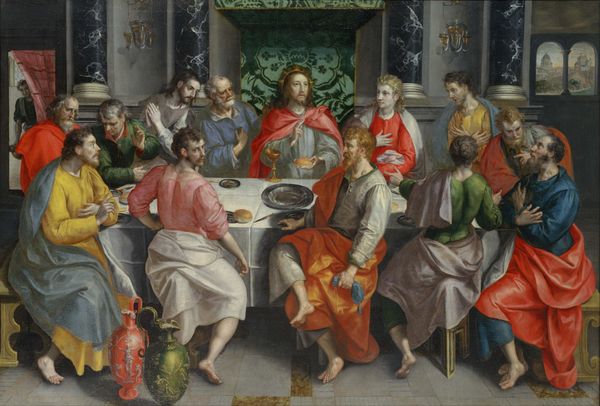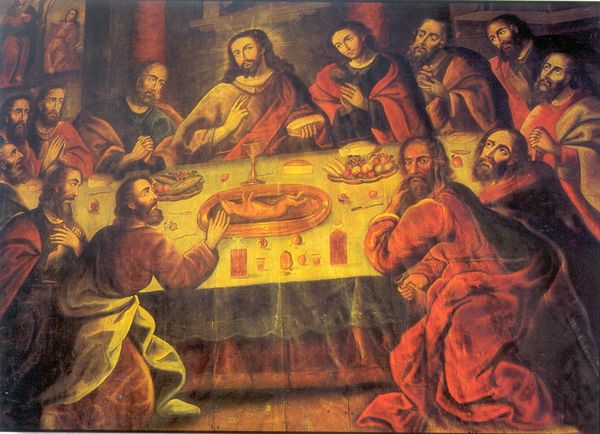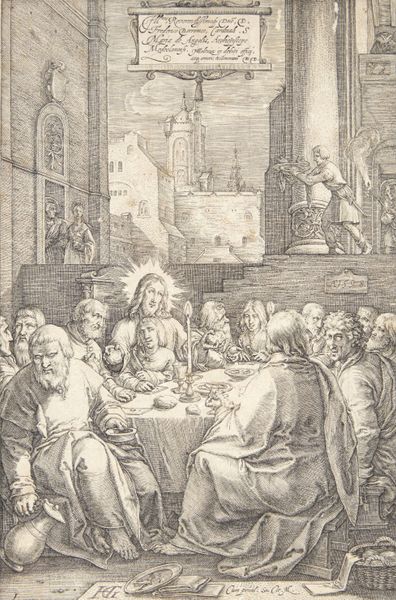
painting, oil-paint, fresco
#
narrative-art
#
painting
#
oil-paint
#
fresco
#
group-portraits
#
christianity
#
history-painting
#
northern-renaissance
#
early-renaissance
#
christ
Dimensions: 185 x 294 cm
Copyright: Public domain
Curator: Here we have Dirk Bouts's "Altarpiece of the Holy Sacrament" created around 1466, an oil painting showcasing the Last Supper, but in a rather unconventional manner. Editor: My first impression is the profound sense of stillness. The scene feels less like a bustling biblical event and more like a carefully staged, almost frozen tableau. It’s unnerving, almost sterile. Curator: Indeed. The piece stands out for its emphasis on geometric perspective and meticulous architectural detail, hallmarks of the Early Renaissance. The figures themselves, while rendered with great care, serve to enhance the overall structural composition, not distract from it. Look at the mathematical precision! Editor: But isn't the so-called “precision” also a reflection of the political landscape of the time? Aren’t the supposed onlookers, presented in the side panels, actually portraits of the members from the Leuven Brotherhood of the Holy Sacrament that commissioned the painting? This subtly weaves in the authority of the local governance and reflects the role of patronage in shaping the artistic narrative. Curator: That's an intriguing layer of contextual interpretation. But consider how the play of light enhances the spatial relationships. Light creates depth and shadow, organizing our visual plane through a semiotic articulation of planar logic! The central panel adheres perfectly to single vanishing point perspective, thus emphasizing a hierarchical structuring within the painting's own architectural framework. Editor: Sure, we see Bouts playing with perspective. But by situating the Last Supper in a contemporary, affluent Flemish setting, Bouts equates wealth with religious significance, which might even signal anxieties of the burgeoning merchant class needing to prove its spiritual worth! Also, what are the implications of not representing the classic chaos of betrayal we so often associate with depictions of this scene? Curator: It seems that he invites viewers to engage in silent contemplation, drawing them into the moment rather than depicting dramatic events, which is amplified by the serene atmosphere through a balanced orchestration of shape, light and spatial planes. Editor: This altarpiece seems far from a simple religious depiction; Bouts captured, perhaps unintentionally, societal complexities through symbolism and form. Curator: Ultimately, Bouts mastered geometric form in service of the narrative function. Editor: For me, it is in how these narratives intertwine—biblical, socio-economic, artistic—that the Altarpiece finds its true power.
Comments
No comments
Be the first to comment and join the conversation on the ultimate creative platform.
